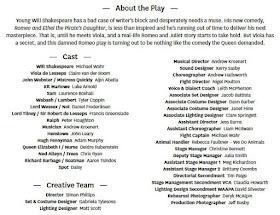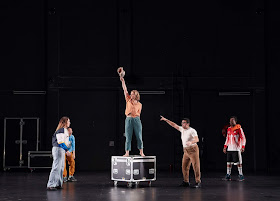Belfast Girls by Jaki McCarrick. Echo Theatre directed by Jordan Best at The Q, Queanbeyan Performing Arts Centre, August 24-31, 2019.
Reviewed by Frank McKone
August 24
Cast:
Judith – Isabel Burton
Sarah – Phoebe Heath
Ellen – Joanna Richards
Hannah – Natasha Vickery
Molly – Eliza Jennings
Set Design – Chris Zuber; Lighting Design – Murray Wenham; Music and Sound Design – Peter Best; Costume Design – Anna Senior
In her article ‘The Genesis of Belfast Girls’ [ https://www.writing.ie/news/the-genesis-of-belfast-girls-by-jaki-mccarrick/ ] (January 2018) Jaki McCarrick wrote “I’m also currently developing Belfast Girls as a screenplay with help from the Irish Film Board.”
I hope this happens because Jordan Best and her well-balanced cast have shown us how intense a close-up movie of these particular five young women’s journey would be.
In their confined accommodation well below decks for the four months it took to sail from Ireland to Australia in 1849, even with occasional brief sorties to view the never-ending sea, or to invade the space of the violent crowd next door to their private enclave, we see the clashes between social classes played out in angry argument to the point of awful physical attack.
The drama, which shows Best’s tight directing, works from the personality of each ‘girl’ growing from cover-up and self-protection to revelations which bring them together – to a new understanding. McCarrick, of course, has provided the actors with the words they say out loud, but I imagine for each one of the actors the analysis of their characters and developing how they could express them must have been a highly emotional experience.
The result for me was as if I was looking through the camera, focussing from one face to another, from one image of an action to the next, until a kind of relief from that close-up intensity as my camera panned along the group standing on deck, ready to embark in Sydney. Coming, ready or not.
The acting skills, and the sense of equal standing among the five actors, are at the heart of this production. But then the set design, with its great sail, puts the small scale of the girls’ cabin into the context of the seemingly interminable voyage ‘halfway round the Earth’ as one says. And then again there is the essential mood created by Peter Best, linking the scenes as they appear and fade – and not forgetting the literally frightening storm effect, when sound and light explode.
Only afterwards did I think, of course: this is Peter Best, film composer from Bliss, through Crocodile Dundee, to Muriel’s Wedding! Perhaps Jaki McCarrick should be approached for her film.
The history of the Irish Potato Famine and the advantage taken by the British to transport the Irish poor and literally starving women from Belfast to Sydney to provide wives and workers is now much better known because of this play. Jaki McCarrick’s article is an excellent read to fill out what we learn in the theatre, from when she discovers the name – Nora McCarrick, from Easkey, Sligo – among the four thousand ‘Belfast girls’ sent under Earl Grey’s so-called Orphan Emigration Scheme.
Jordan Best is to be congratulated for producing and directing this significant play. Special thanks too to the Queanbeyan Palerang Regional Council and The Q Team Leader Stephen Pike for supporting the work of Echo Theatre.
Not to be missed.
 |
| L-R: Phoebe Heath, Isabel Burton, Joanna Richards, Eliza Jennings, Natasha Vickery as Sarah, Judith, Ellen, Molly, Hannah |
© Frank McKone, Canberra












































